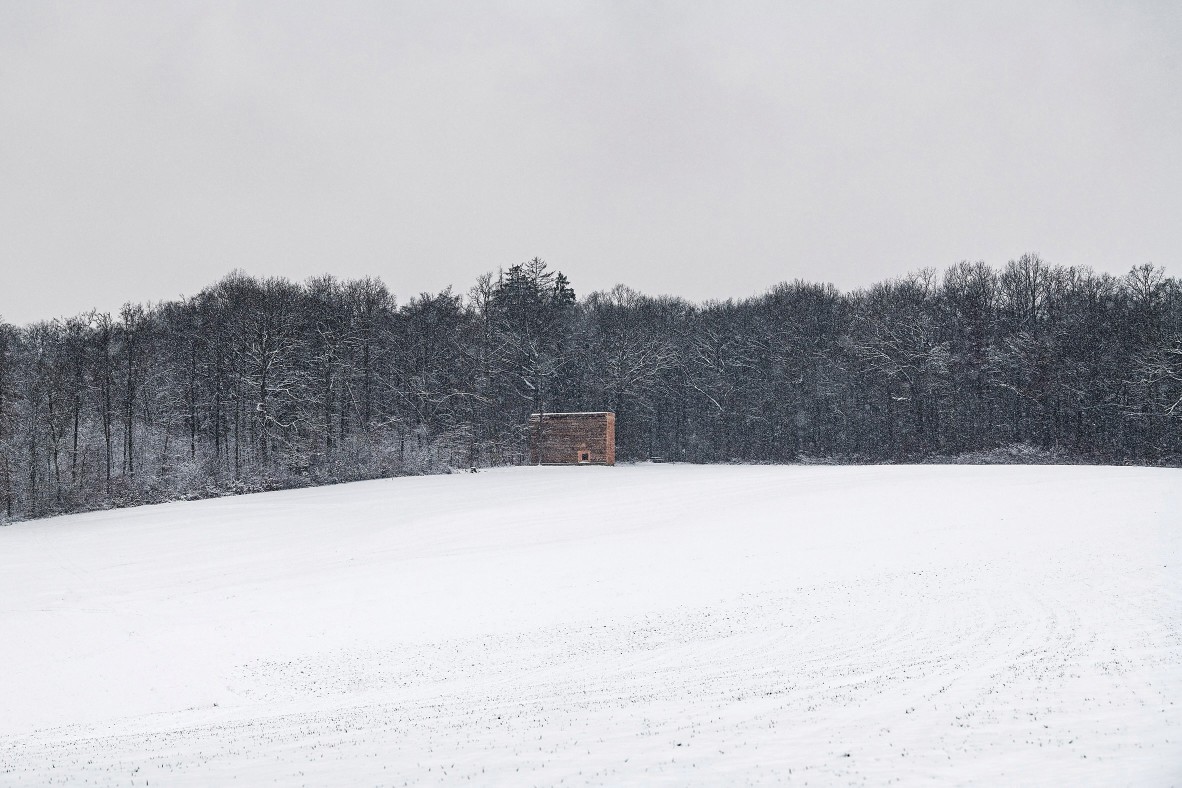
John Pawson’s Wooden Chapel is situated where the forest meets the open landscape in Unterliezheim, Germany. This unique timber structure is part of Sieben Kapellen (Seven Chapels), an architecture project by the Siegfried and Elfriede Denzel Foundation that involved the construction of seven wayside chapels along the Donau Radweg, a 2,850-kilometre cycling route snaking along the Danube river, in 2018–2020.
Chapel – Unterliezheim, Bavaria, Germany
Architect: John Pawson
Photographer: Felix Friedmann
__________
Douglas
61 Douglas fir trunks felled in six forests in Baden-Württemberg and Rhineland-Palatinate
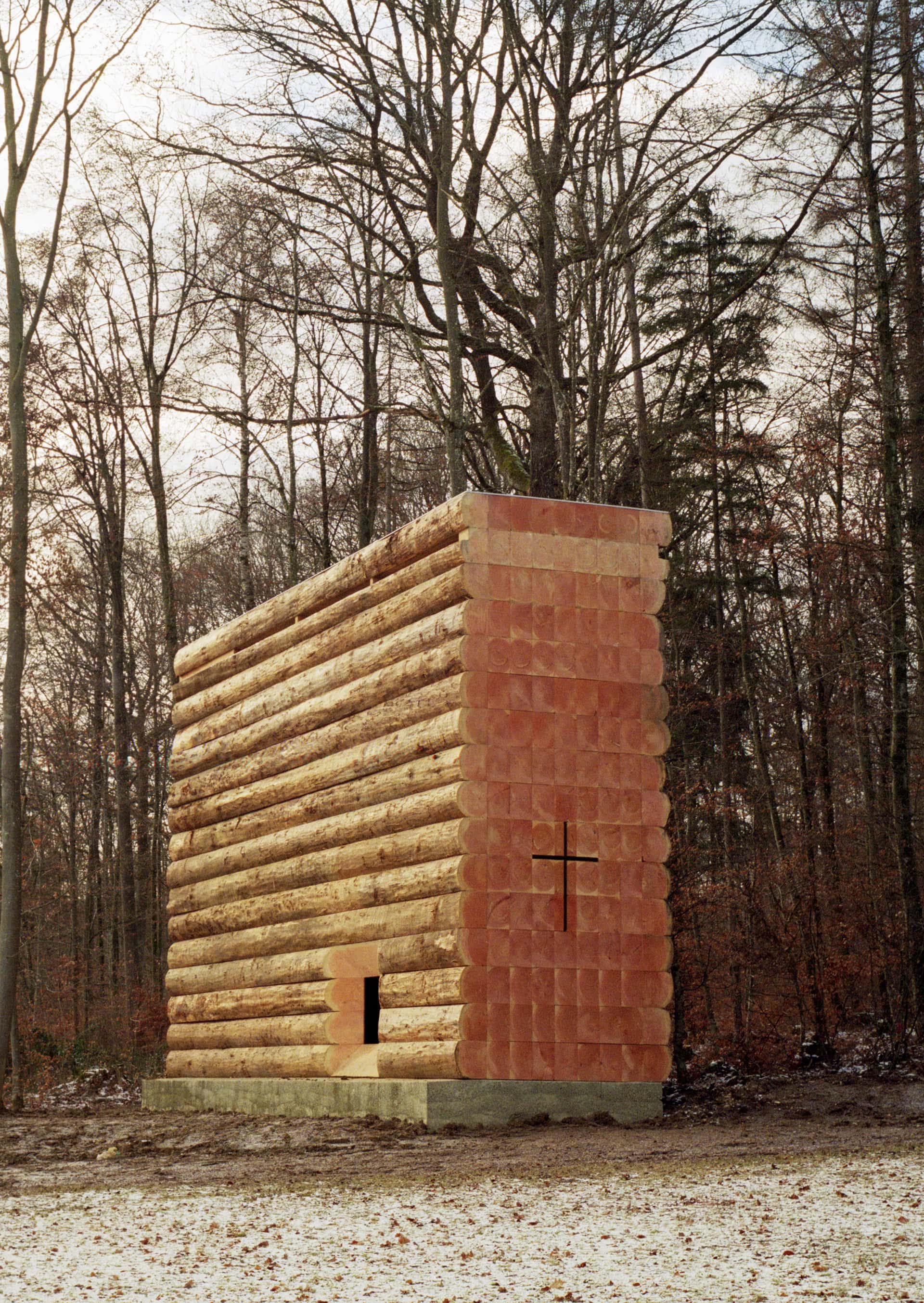
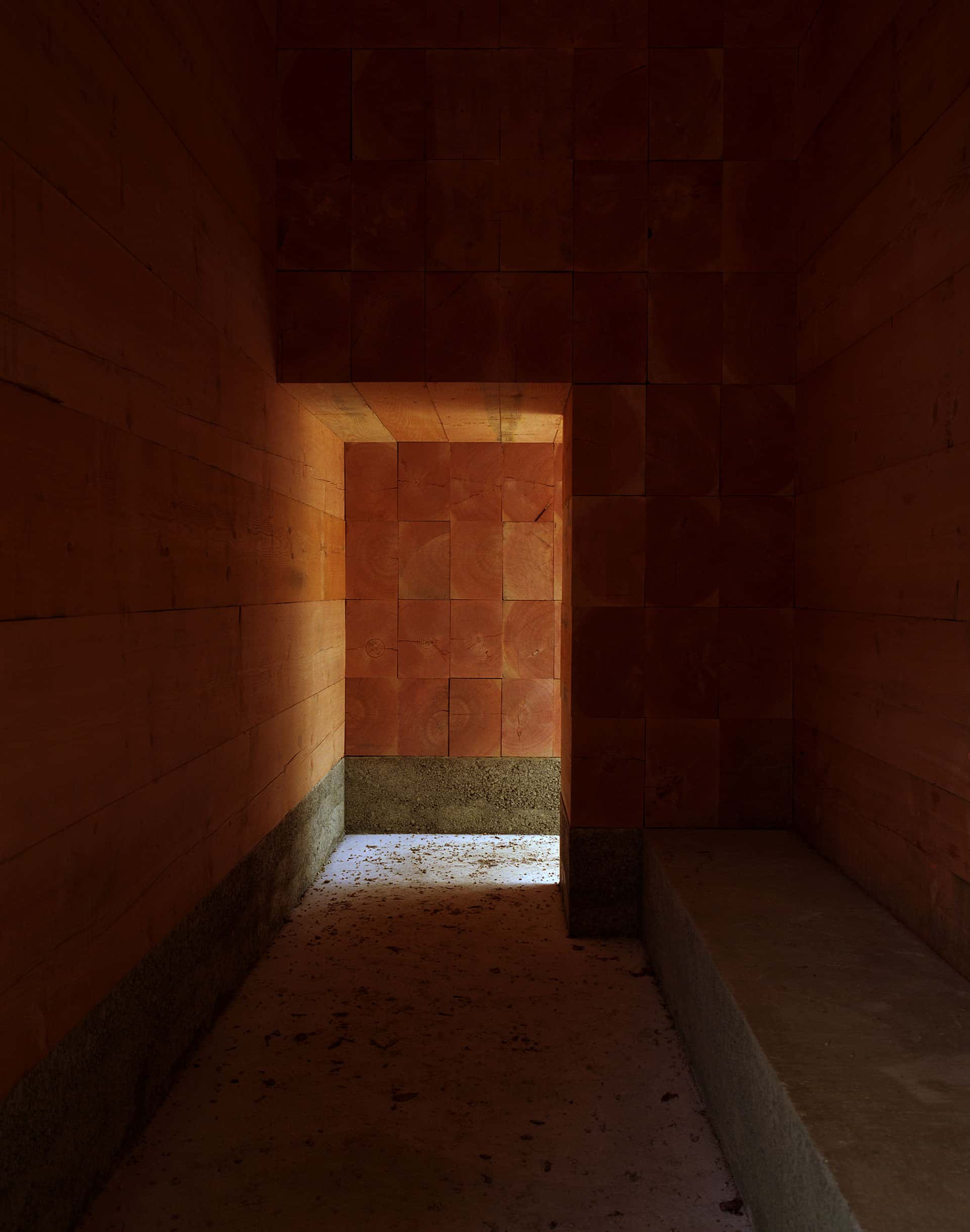
Each of the seven wayside chapels along the Donau Radweg was designed by a different architect. The brief was simple: the chapel had to be a timber structure, including a cross, and always be open to everyone.
When John Pawson was invited to design one of the chapels in South Germany, he joined a long-standing tradition of creating chapels as spiritual and architectural landmarks in the landscape.
Set on a hillside on the very cusp of the forest, with sweeping views across the Swabian landscape and a clear sight line to the church tower of the village of Unterliezheim, the wooden chapel is intended to appear as a found object, rather than as a conventional work of architecture.
A small path branching off the main trails leads to its entrance, located at the transitional point between woodland and open ground. The structure itself is framed as the simplest of gestures. From certain perspectives, its mass appears as a pile of logs stacked up to dry; from others, the considered placement of the elements on a concrete plinth creates a more formal impression of a sculpture emerging from the forest.
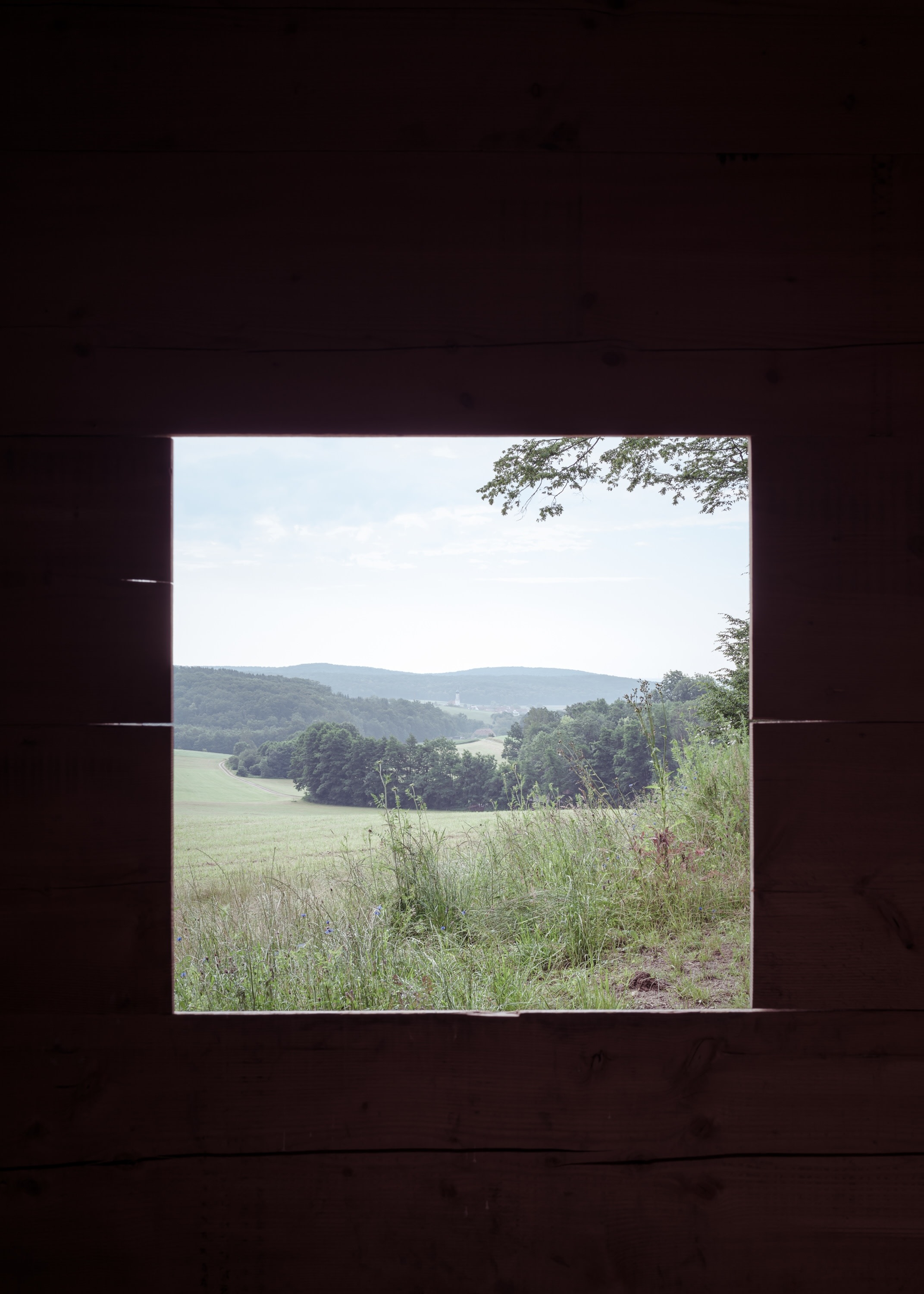
View across the Swabian landscape from the inside of the chapel
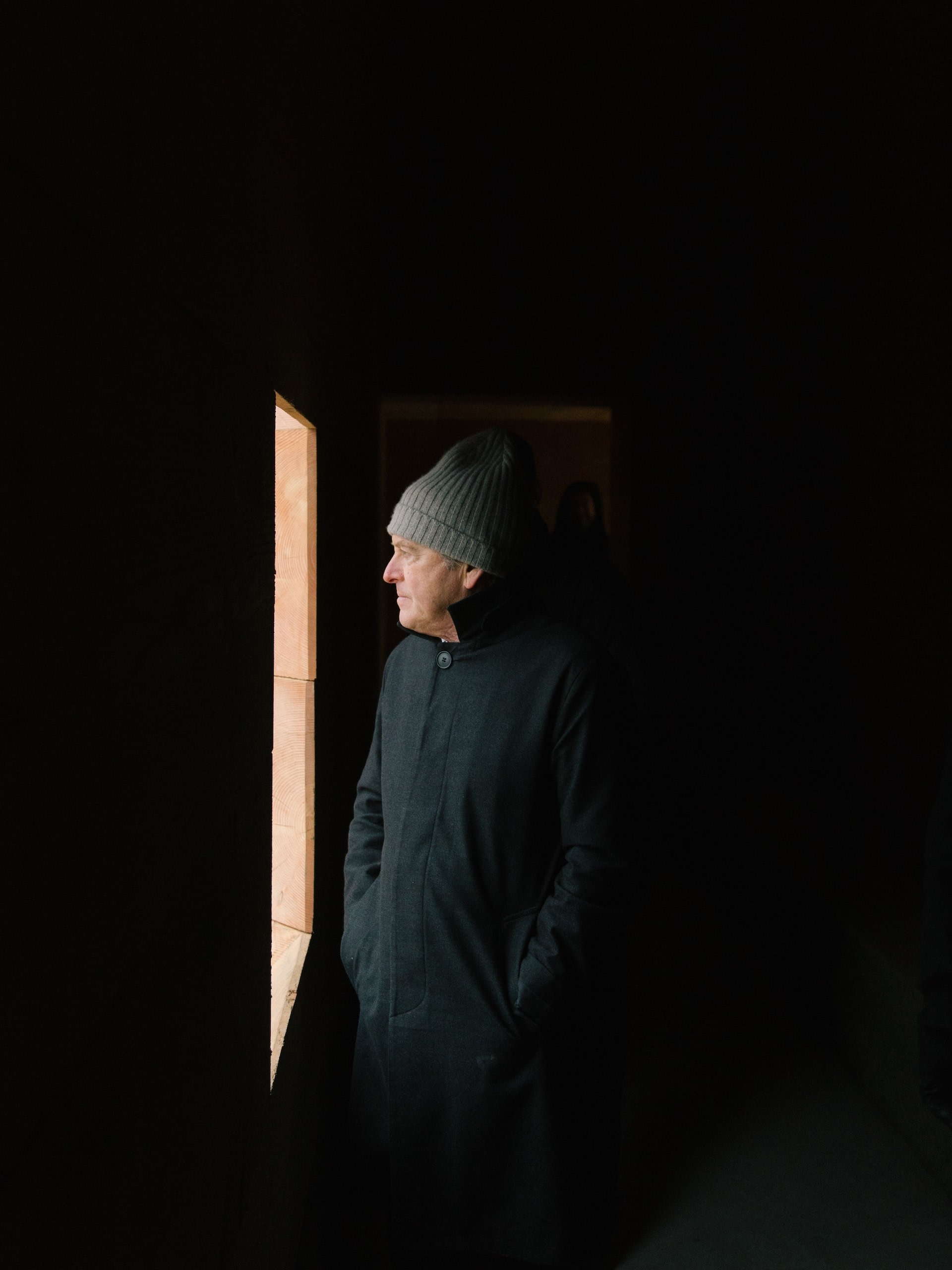
John Pawson inside the chapel.

In its profound simplicity, Wooden Chapel was intended as a refuge and a place of contemplation and reflection. Unadorned, it offers a space for freedom and clarity. The construction is simple: 61 stacked Dinesen Douglas fir trunks, carefully selected and sourced from six forests in Baden-Württemberg and the Rhineland-Palatinate. One of the end walls features a cross made of amber glass.
When a single material predominates, there is scope to inhabit that material in a sensorially immersive way – by touch, sight, smell and even sound, since the character of a surface affects the acoustic character. Inside the chapel, the glory of the cut Douglas trunks is immediate – in the warm hues, tactile surfaces and the patterns of the sawn grain.

The 61 logs for the Pawson Chapel has been carefully collected from 6 forest owners in Baden-Württemberg and Rheinland-Pfal.
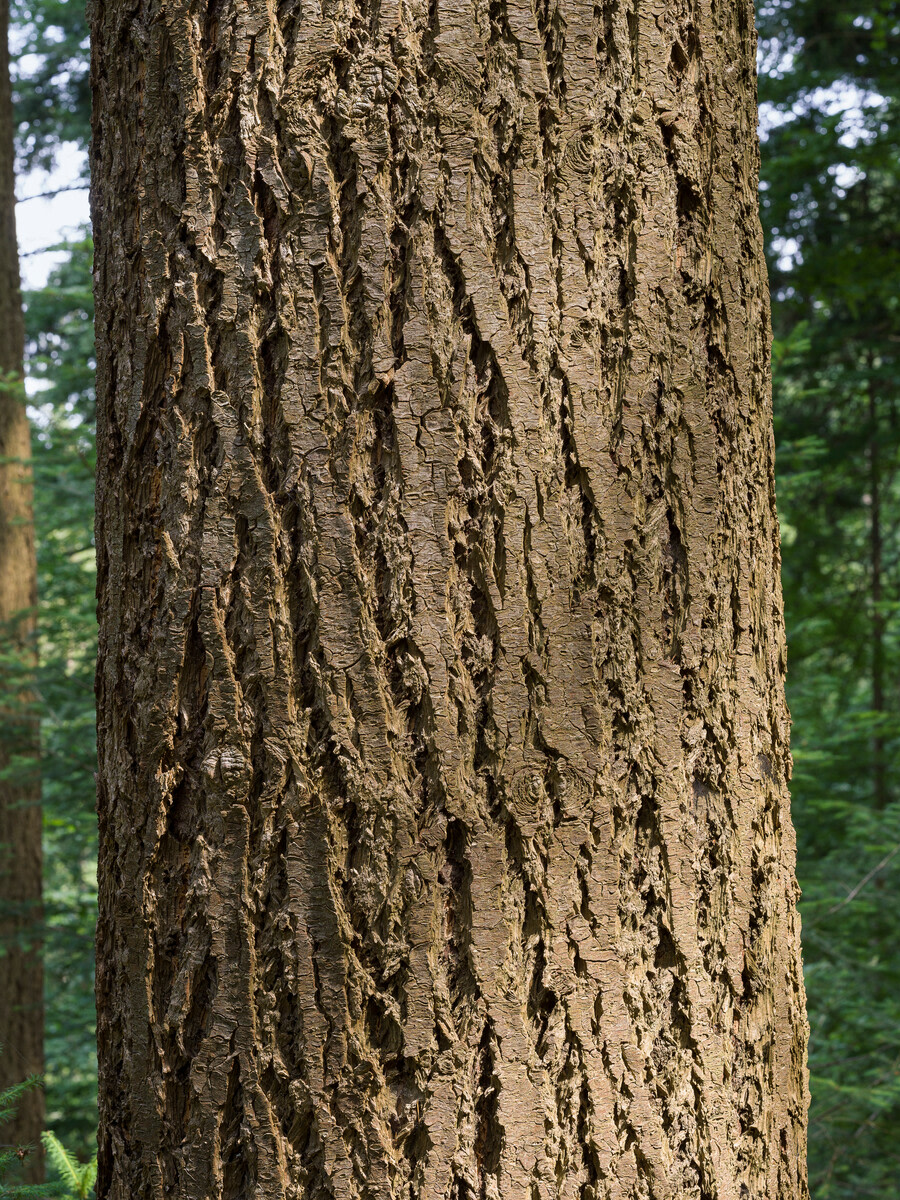
The purposefully narrow entry maintains the sense of physical proximity encountered as one moves through the dense woods, adding visceral and visual theatre to the exhilarating experience of passing into an attenuated space over seven metres high and nearly nine metres long. Light levels are deliberately low, with a narrow beam of natural light entering from above, through a small aperture near roof level.
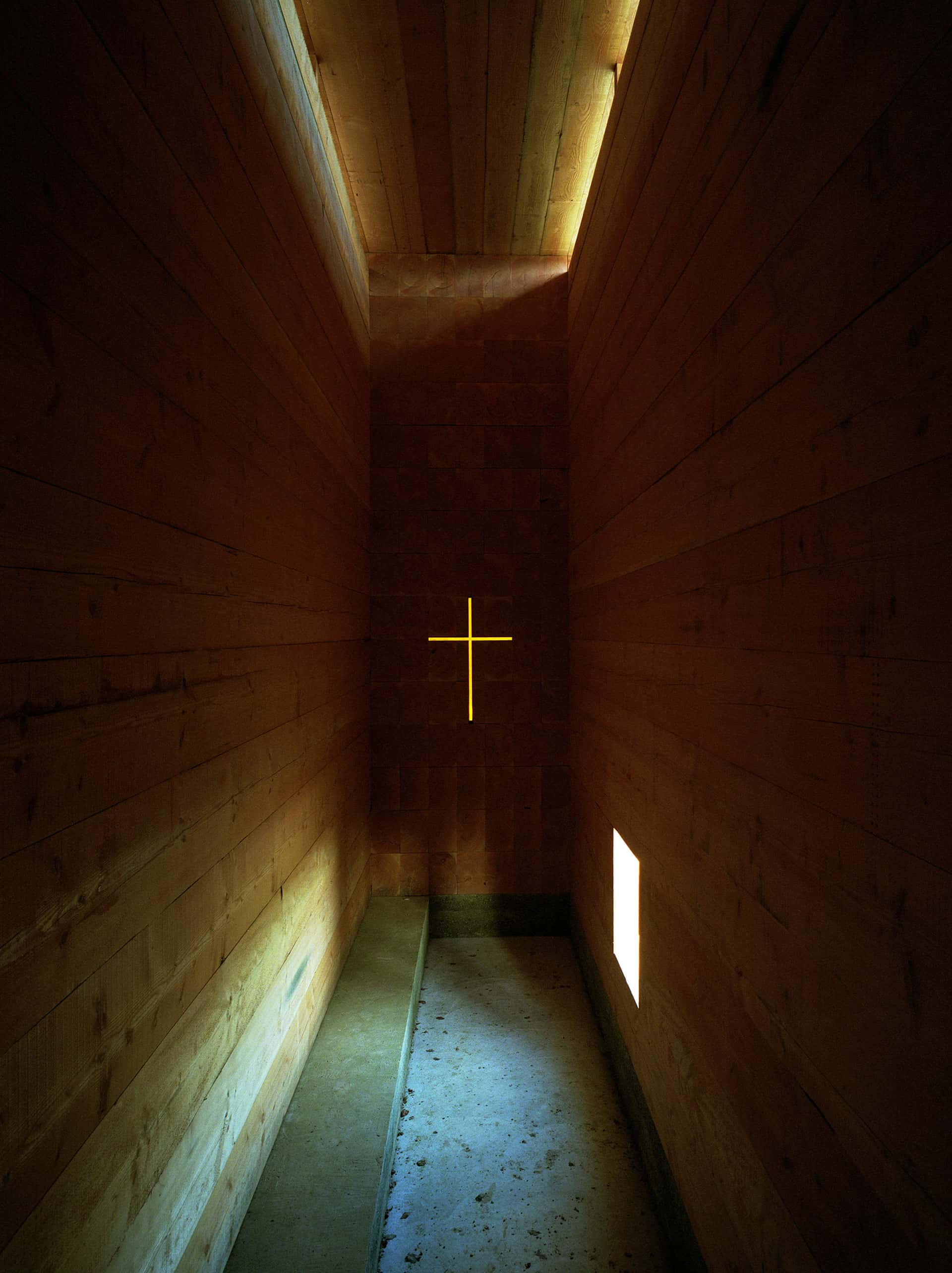
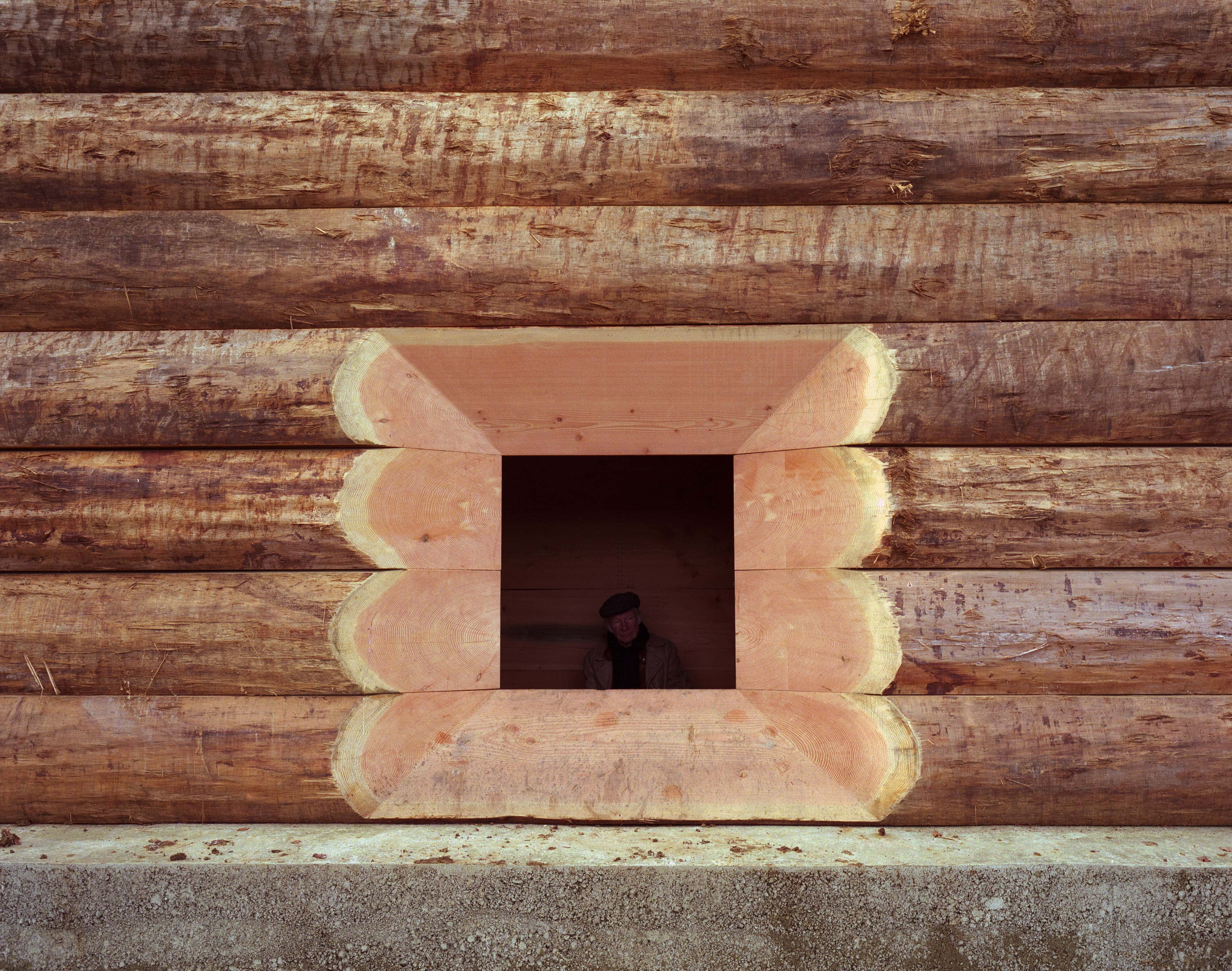
A slender bench invites one to pause for a moment of inward reflection and contemplate the rich but rigorously restrained interior world of the chapel, the outward view it frames across the landscape, and the sustained counterpoint of compression and expansion that lies at the heart of this architectural composition.
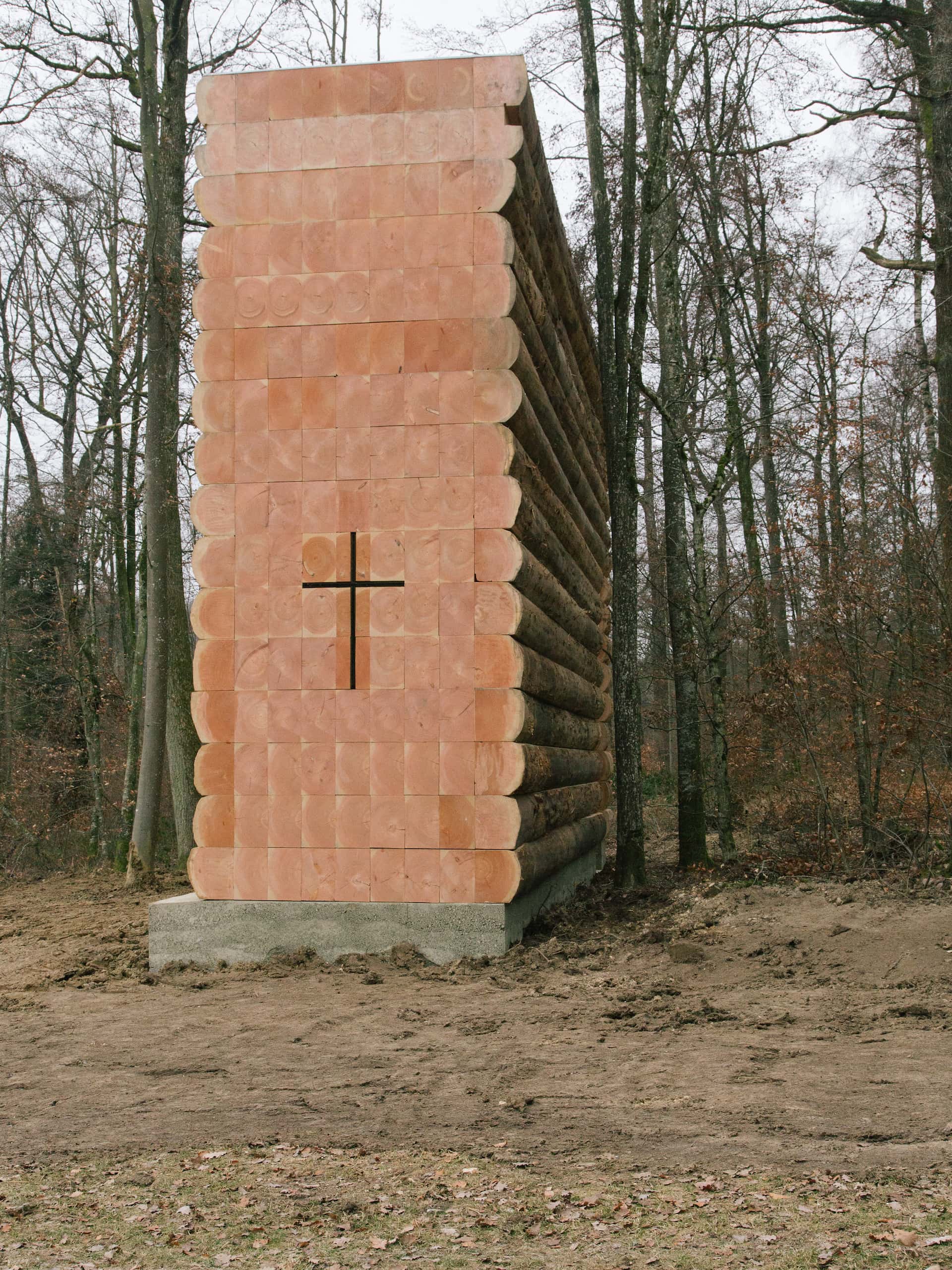
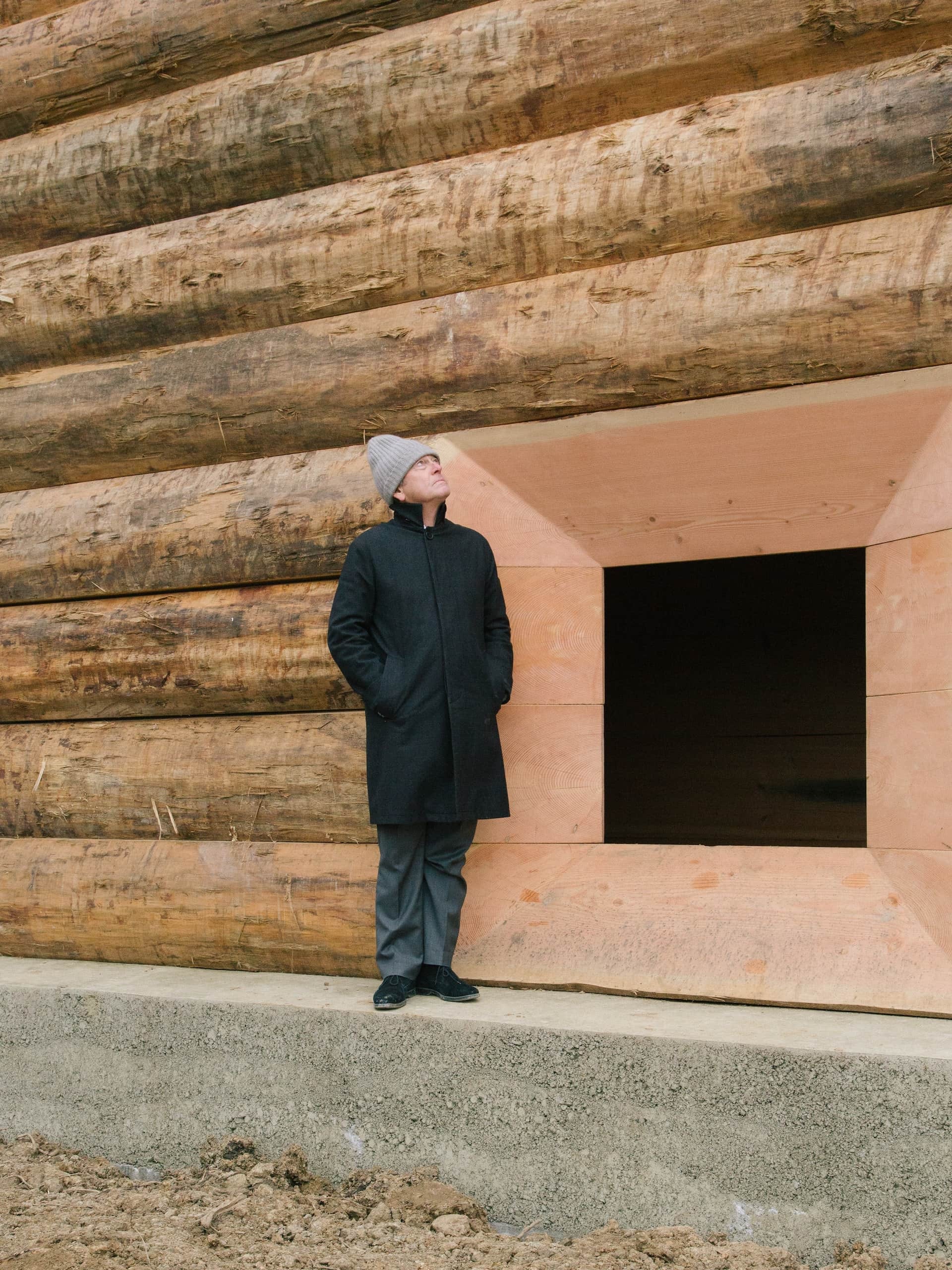
John Pawson in front of his wooden chapel
Outside, where the wood has been subjected to the minimum intervention and where time and the weather will each contribute to a process of ongoing physical change, the structure will carry in perpetuity a powerful memory of the forest from which it has been formed.
